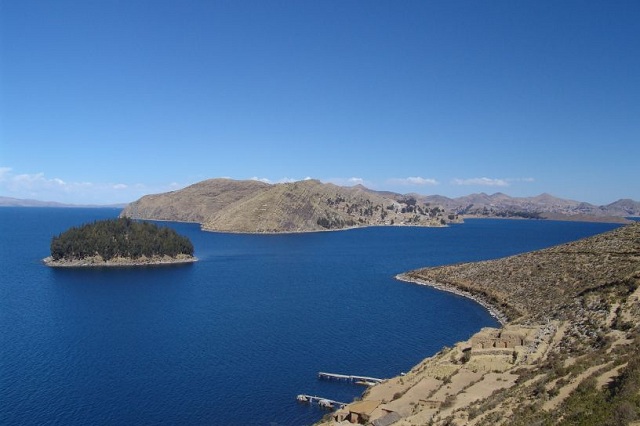Climate Change, Pollution, and More Contribute to the Alarming Drop in Water Levels.
Lake Titicaca, the world’s highest freshwater navigable lake and a natural wonder straddling the border between Peru and Bolivia, is in the grip of an unprecedented water crisis. The lake, cherished for its stunning beauty and vital role in supporting the livelihoods of millions, has seen its water levels plummet by over a meter since June, marking the lowest point in three decades.
The dwindling water level has cast a pall over the lives of the people who depend on Lake Titicaca for their sustenance. Fishing communities are grappling with diminishing catches, making it challenging to provide for their families and meet market demands. Farmers are experiencing crop failures and struggling to secure enough water for their livestock.
The lake, once bustling with boats ferrying tourists to ancient ruins and indigenous communities on its islands, now sees many vessels stranded on its receding shores. The tourism industry, which once flourished here, is suffering, impacting the income of locals who rely on it.
The root causes of this devastating drought are intricate and multifaceted. Climate change, recognized as a major factor, has unleashed an unprecedented winter heatwave in the region. This heatwave, elevating temperatures by up to 10 degrees Celsius above the norm, has led to reduced snowfall and glacier melt in the Andes mountains, which serve as the primary sources of water for the lake.
Additionally, the elevated temperatures have triggered increased evaporation from the lake’s surface, a challenge exacerbated by its lofty altitude of 3,800 meters above sea level. Factors such as deforestation, pollution, population growth, and unsustainable water practices in the region further compound the issue. The notorious El Niño and La Niña phenomena, altering rainfall patterns and water flows across South America, also play a role.

In response to this looming ecological disaster, the governments of Peru and Bolivia have declared a state of emergency. They are collaborating on a comprehensive plan aimed at preserving Lake Titicaca. This initiative includes monitoring the lake’s water quality and quantity, restoring vital wetlands and forests, promoting efficient irrigation systems and renewable energy sources, and raising awareness among local communities about the importance of water conservation.
Lake Titicaca holds significance not only as a lifeline for millions but also as a cultural and spiritual treasure. It is believed to be the cradle of the Inca civilization and holds sacred importance for numerous indigenous groups. The lake’s diverse ecosystem, featuring over 500 species of plants and animals, some of which are endemic and endangered, underscores its ecological value.
The fate of Lake Titicaca rests in the hands of both governments and individuals, as well as the collaboration of regional and international stakeholders. This pristine lake serves as a symbol of hope and resilience for communities that have harmoniously coexisted with nature for centuries. It stands as a stark reminder of the urgency and responsibility to protect our planet from the devastating impacts of climate change.
Resources:
1.https://www.egyptindependent.com/the-worlds-highest-navigable-lake-is-drying-out/
4.https://a-z-animals.com/blog/discover-why-the-worlds-highest-navigable-lake-is-drying-up/